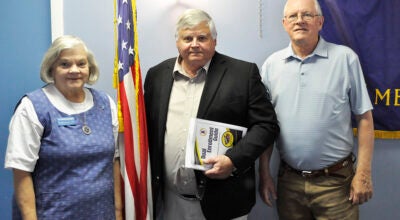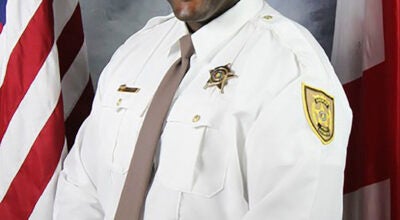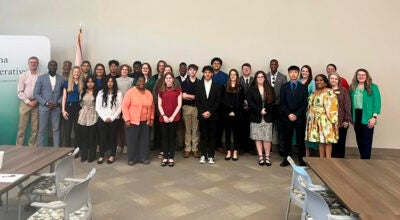Brundidge UMC celebrates 150th anniversary
Published 11:00 pm Wednesday, October 31, 2012
Brundidge United Methodist Church celebrated 150 years on Sunday with a special morning service with the Rev. John Ed Mathison as the guest minister and with a shared fellowship “dinner.”
The Rev. Michael Lawler, church pastor, said BUMC has a long and distinguished history of service to God and the people of Brundidge.
“The exact date of the advent of Methodism in Brundidge is unknown but records of the Alabama-West Florida Conference confirm appointments of ministers who served through the years of the War Between the States,” Lawler said. “Methodist preachers first preached at camp meetings in Brundidge as early as 1842 and it may have been earlier than that but we have no records confirming that.”
Lawler said a church building was constructed in 1856 and circuit riders and lay leaders held services in the church at different times.
“But it was not until 1862, that a fulltime pastor was assigned to the Methodist church in Brundidge,” Lawler said. “The first resident pastor for the Methodists in Brundidge was the Rev. Anthony Seale Dickenson, a charter member of the Alabama Conference. He was appointed in 1861-62 and again in 1864 and 1868.”
Dickinson was the great-grandfather of Betty Dickinson Hixon, a church member whose family has been in the church for six generations. The Dickert family (Don) has also had a continuous presence in BUMC for six generations.
The present church building was constructed in 1919 but the church was not dedicated until 10 years later when the church was paid for.
The church was built on the Akron Plan that was popular in the late 19th and early 20th centuries and was first used in 1872 at the First Methodist Episcopal Church in Akron, Ohio.
Churches built on the Akron Plan have a rotunda surrounded by connecting Sunday school classrooms on one or two levels. The plan initially promoted efficiency of movement between Sunday school and worship services. But most of the existing churches built on the Akron Plan have expanded to include Sunday school building, fellowship hall and offices.
Lawler said the Akron Plan was popular for two main reasons,
“Churches built on the Akron Plan had curved seating, which brought the congregation closer to the altar and made it more convenient for communion,” he said. “The plan was also a cost-saving measure in that the sanctuary and Sunday school classrooms were contained in one building. Many of the churches had a balcony and that extra height made them cooler during hot weather.”
Sara Bowden, a lifelong member of BUMC, attended Sunday school on the second level of the church.
“Mr. Perry Owens was the church treasurer and he would come around and take our collection, put it in his pocket and go off somewhere and count it,” Bowden said. “The younger children had Sunday school down in the fellowship hall and Mrs. Wood would play the piano for the general assembly and then the children would go to their classes in the fellowship hall.”
There was a physical closeness in the churches built on the Akron Plan and, although, BUMC now has a Sunday school wing, a spiritual closeness exists among the members of the church, which had a spiritual existence in Brundidge before Brundidge was a town, Lawler said.





